I am delighted to host this post from Etain Addey, a second response to Seeing, feeling, and hearing the world. We in the West can learn much from Indigenous cultures, but as Tyson Yunkaporta tells us in Sand Talk, ‘The assistance people need is not learning about Aboriginal Knowledge but in remembering their own.’1 Etain Addey has lived and worked with Land and Creatures at Pratale, a hill farm in Umbria, for many years, and is active in Sentiero Bioregionale, the Italian Bioregional Network. She brings us stories from the old land of Europe, Land that is ‘a cloak wrapped around my shoulders, made of these hills, these woods, these animals…’
When we first came to live in this valley in Umbria, nearly fifty years ago, the old people, the last of the peasant community, used to tell us their stories. They would tell us the same stories over and over again and we used to think, “They are so old, they can’t remember they’ve already told us this one.”
But it was we who couldn’t remember and gradually we realised they were teaching us fundamental things about this place: one telling is not enough if you want to grasp all the details. As Kankawa Knight of the West Kimberly region in Australia says, “When we were young, our Elders told us stories that convey the depth of perception of rinyi. We didn’t understand it at first, so they repeated it until we learned it as we grew up. Rinyi is deep meaning – Country’s meaning.” It was apparent to our elderly neighbours that we were like children at first, blind and deaf to this valley and its deep nature. Their kindness and patience in the telling was a huge gift.
And so, this is the field where Mori was trampled to death by his bull one morning at dawn, a just revenge for his beating the animal some years before. “That bull was biding his time”, said Antonio. That is the tree where the shepherd Luigi’s dog Franca dragged him away seconds before lightning struck. Here is the barn where the wild man Stocchi slept when his plastic bag clothes caught fire and he was hurt and needed Peppe’s care. This is the hole in the farmhouse wall where an owl has nested for more years than anyone can remember. Behind your walled up fireplace, that’s where Orlando hid for fifteen years after he escaped from jail….
We gradually came to see that the place we had chosen to reinhabit was layered with thousands of stories, not only human stories but bird, fox, wild boar, bat, oak, dogwood, field maple, river narratives. When the 1984 earthquake shook us out of bed and knocked down hundreds of buildings,2 we realised we had seen the signs – owl beating on the window pane the night before, sheep bleating insistently, the spring running turbid, the two aspens above the farmhouse dying suddenly – but we were unable to understand what was being said. When thirteen years later there was another big earthquake, we knew a month beforehand because now the landscape was familiar and the long thin north-south clouds, the insects unable to fly, the nausea we felt and the restlessness of the wild animals all told us what was about to happen.
We know the scorpions come out of hiding and the ants move their brood before really intense rain, that the bats retire into the eaves of our house just before the birds start their dawn chorus, that badger knows exactly when the grapes in the vineyard are ripe enough to start eating. “The animals study us!” said our neighbour Gigino. “Fox comes during siesta, wolf attacks during lunch.” It took a long time before I realised the cicadas are listening to each other’s music and that the two hooded crows, who follow the sheep for the grasshoppers they startle as they move across the pastures, are actual individuals. We call them Hoodie and Goodie.
We are orphans compared to people of indigenous communities. We have to try and piece together how the place we call home works, how we fit in. But the most extraordinary discovery is that place speaks, calls out to us, even when we don’t have a tradition of invocation.
Years ago I read Franz Hoogland’s attempt to explain the aboriginal concept of le-an[ [also spelled liyan - Ed].He tells how one day he woke up and instead of sitting by the fire and drinking a cup of tea, he jumped up and set off. “I don’t know why I’m going.(…) All of a sudden, right down there, there is this head sticking out of the water. Big turtle looking at me!” Franz sees the turtle is stuck in a rock hole and spends a difficult time trying to pull him out and push him back in the sea. “Well, that’s le-an. The feeling took me to the turtle because he needed some help. And that’s the time you start to experience, when the land pulls you and takes over.”3
Now this is a piece of advice, an explanation of how to behave.
Some years later, I did use this advice. It was before dawn one June, near the Solstice, and suddenly I had a strong desire to go down to the bottom of the valley and watch the stream running before summer turns it into a trickle.
“But,” I said to myself, “I have to go and milk the sheep, water the garden, feed the cats and dogs, make the cheese.” Then I remembered Franz’s turtle story. So I picked up a stick and called Pippo, my small and amiable dog, and made my way down to the stream. It is cool and dark down there and the stream is at a place where three paths meet. When I got there, I stood on the bank and watched the water flowing. Pippo looked at me to see why we’d come and then sat down. This is an overgrown place where nobody ever comes and it is hard to see where you are.
About thirty seconds passed. Suddenly a man came crashing out of the wood on the path opposite, leaves in his hair. He looked at me wildly and said “I’m lost! I’m lost! I don’t know where I am! Which way should I go?” (Not: “Excuse me Signora, can you tell me…”)
I pointed to the path I’d just come down. “I know this path looks the most unlikely one, but it is the right way.” Without a word he splashed across the stream and disappeared up the path. I stood there laughing to myself. I thought how once he got to the top of the hill and could see where he was, he’d wonder who was that witch standing down there in the middle of the wood?
I think the world uses our old stories to involve us in its workings. It is our common language. Who is that witch? It is Hecate, the Underworld Goddess, she who heard Persephone’s cry as she was stolen away by Pluto. Hecate stands with her torch to light the way at the parting of three paths; in Rome her name was indeed Trivia (three paths). She has a following of Infernal Dogs. For a moment I felt proud: “I’m Hecate!” Then I thought “No, I am as much Hecate as the aimiable Pippo is a following of Infernal Dogs: we are just the extras in this film, the present incarnations.
In their recent book on Australian Aboriginal culture Songlines The Power and the Promise, Neale and Kelly talk about the memories stored in Country as an archive. They write, “For the Aboriginal archivist it is more than a job or even a passion, as one might see with Western archivists — instead it is their life’s purpose. They are effectively present-day incarnations of their archive.”4
And the lost man? He must have been a pilgrim strayed from the Saint Francis Way, travelling between Gubbio and Assisi. He will have visited the Abbey of San Verecondo just above us and then lost his way. He looked as if he had slept in the woods.
This episode, reminiscent of “Where are you coming from and where are you going?” of biblical and Platonic memory, talks to me of the nature of this place. The stream Cerquetelle (‘small oaks’) has many stories to tell and here is another, older, harsh pilgrim story.
In the fourth century CE, a Roman knight called Verecondo came through this valley. He was on his way back to France after a pilgrimage to Rome. He found the nearby town of Gubbio already Christianised, with a Bishop, but out here the local people were still pagan. This valley is called Vallingegno because it was the valley of the God Genio Silvanus, a forest God who cared for human health and the health of flocks. I found a mosaic of Genio Silvanus in Ostia Antica: he is a human figure, a wild man with long hair, holding an axe and a pine branch and he is accompanied by a dog – or is it a wolf? There was a temple to Silvanus at the head of the valley and the remains of that place of worship with its ramshead columns are still visible underneath the present day Abbey.
Verecondo stood on the hill beneath the temple and preached the new gospel. It was a daring thing to do and the local people called out to him to get off the sacred hill. Verecondo refused to move away and spoke on. He was stoned to death. His body was buried down by Cerquetelle near that parting of three ways. And there he lay for many, many centuries.
Just before the year 1000 CE, Benedictine monks built an abbey on the hill, using the stones from the temple. The story of Verrecondo’s martyrdom must have been a living memory over hundreds of years because the monks came down to the stream and found his remains and laid them to rest in their new abbey, which took Verecondo’s name.
Time passed and in 1207, another wild man appeared at the abbey, coming up this same hill to knock at the door. It was Francis, he who later tamed the wolf of Gubbio and became a renowned saint. He asked for shelter and was rather roughly treated. He must have looked down at heel, wearing a sack and after a tumble in the snow when some bandits had accosted him. Later, when his fame spread, the Head Abbot went to ask forgiveness for their meagre hospitality. But St. Francis held no grudge against the monks and came back later on to hold the first chapter of his followers in the field by the Abbey of Verecondo.5
Here on the banks of this stream, the place remembers these questing travellers and their travails. And takes care of them.
Amitav Ghosh in The Nutmeg’s Curse tells the story of the massacre and exile of the original inhabitants of the Banda Islands by Europeans who wanted the nutmeg monopoly in the 1600s.Those people were replaced by enslaved workers from “Gujerat, Malabar, Coromandel, the Malay peninsula, Java, Borneo, coastal China (…) Yet for this new population…the islands were a “sacred territory”(tanah berkat) anchored by the spirits of “founder-figures” or datu-datu who were thought to have arisen from the land. Since these unseen beings were linked to particular locations, their presence could not be extinguished, they continued to animate the land.”6
We are old now and the valley has changed. It is much wilder, wolf is back. The farming people have mostly left and the newcomers are foreigners, they run elegant country hotels and we feel the need to tell them where they are, who was here before, impress the old stories on their minds so they become locals and take care of this place.
Wolf is back. We have to watch the sheep now. This morning when I went up to the top field with the sheep, my little grandson Otis came with me. He is five. I was musing on Sandra Wooltorton’s saying “we all have indigeneity, or capacity to reconnect with the world’s being.” And on Anne Poelina’s words “We show them how to sing out to country and we know they will do this as they grow up.” (see Seeing, Feelings, and Hearing the World.)
But it was Otis who, when I showed him the thistles we cut so they won’t go to seed and spoil the pasture, sang out immediately: “Thistles! Thistles! You are so prickly, please don’t prickle and tickle us”.
The song came out of him so spontaneously: he had to show me that. So we go on.

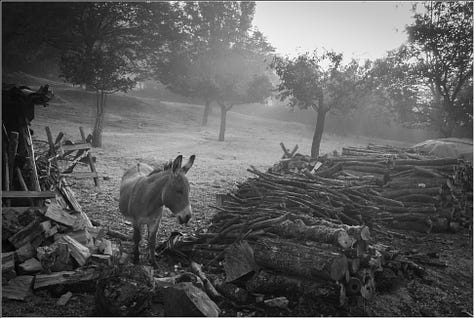



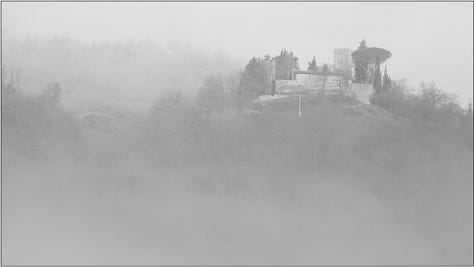



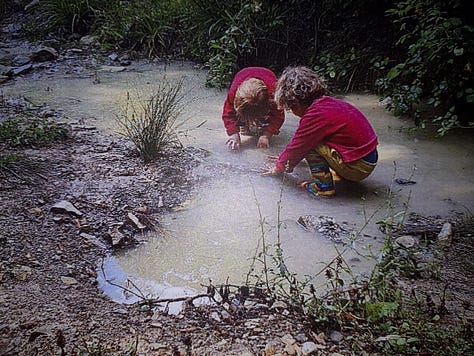
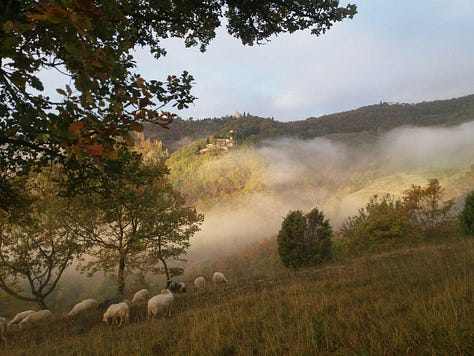

Yunkaporta, Tyson. Sand Talk: How Indigenous Thinking Can Save the World. Melbourne: Text Publishing, 2019.
This story is told in Addey, Etain. A Silent Joy: The Diaries of an Italian Hill Farm. Eyebright Books, 2010. See also The Life of the White Mare: Sobriety and Enchantment. Eyebright Books, 2020. From the Deep Well: The Diaries of Pratale Farm. Eyebright Books, 2016.
Franz Hoogland in Listen to the People, Listen to the Land, Sinatra and Murphy, Melbourne University Press, 1999.
Margo Neale and Lynne Kelly, Songlines The Power and the Promise, Thames and Hudson, 2020.
Jacques Dalarun, La Vita ritrovata del beatissimo Francesco, Milano, 2016.
Ghosh, Amitav. The Nutmeg’s Curse: Parables for a Planet in Crisis. London: John Murray, 2021.





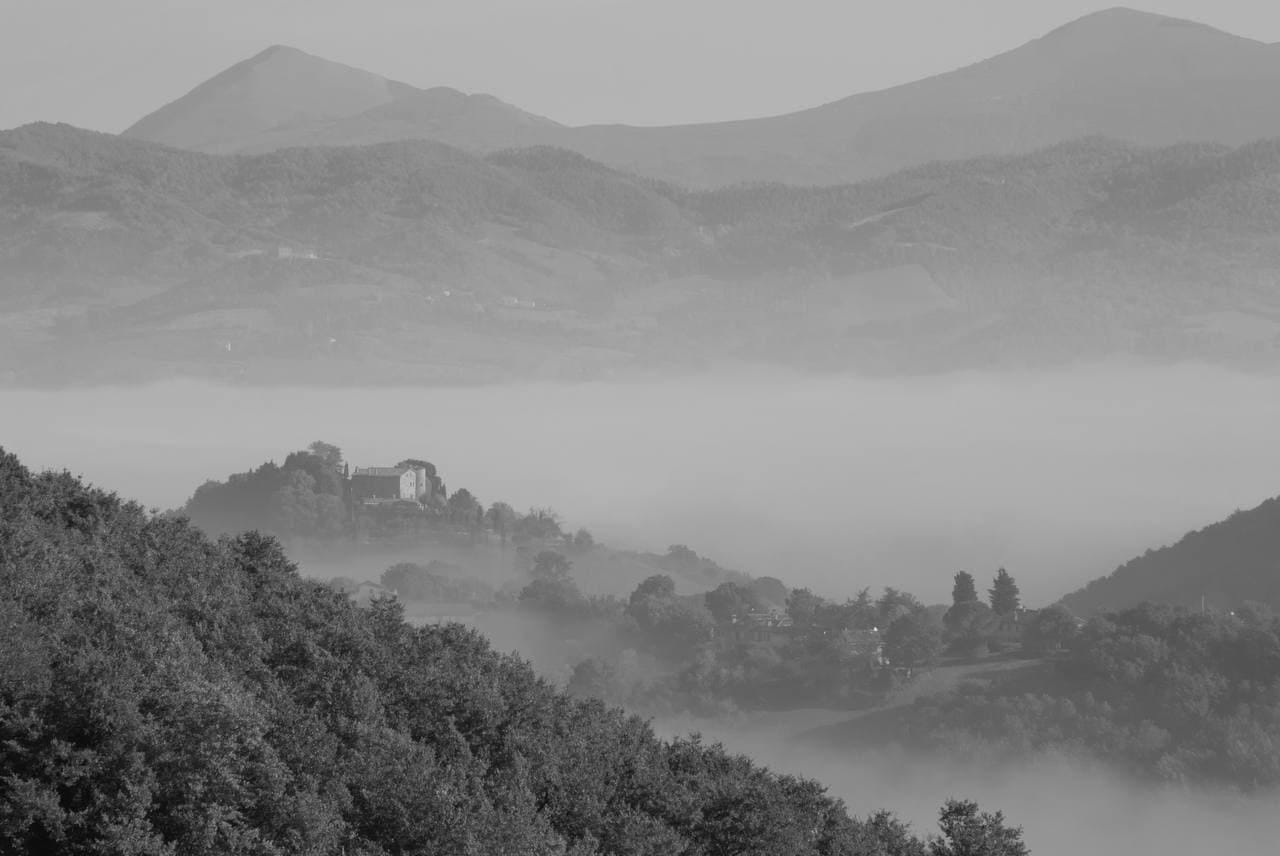
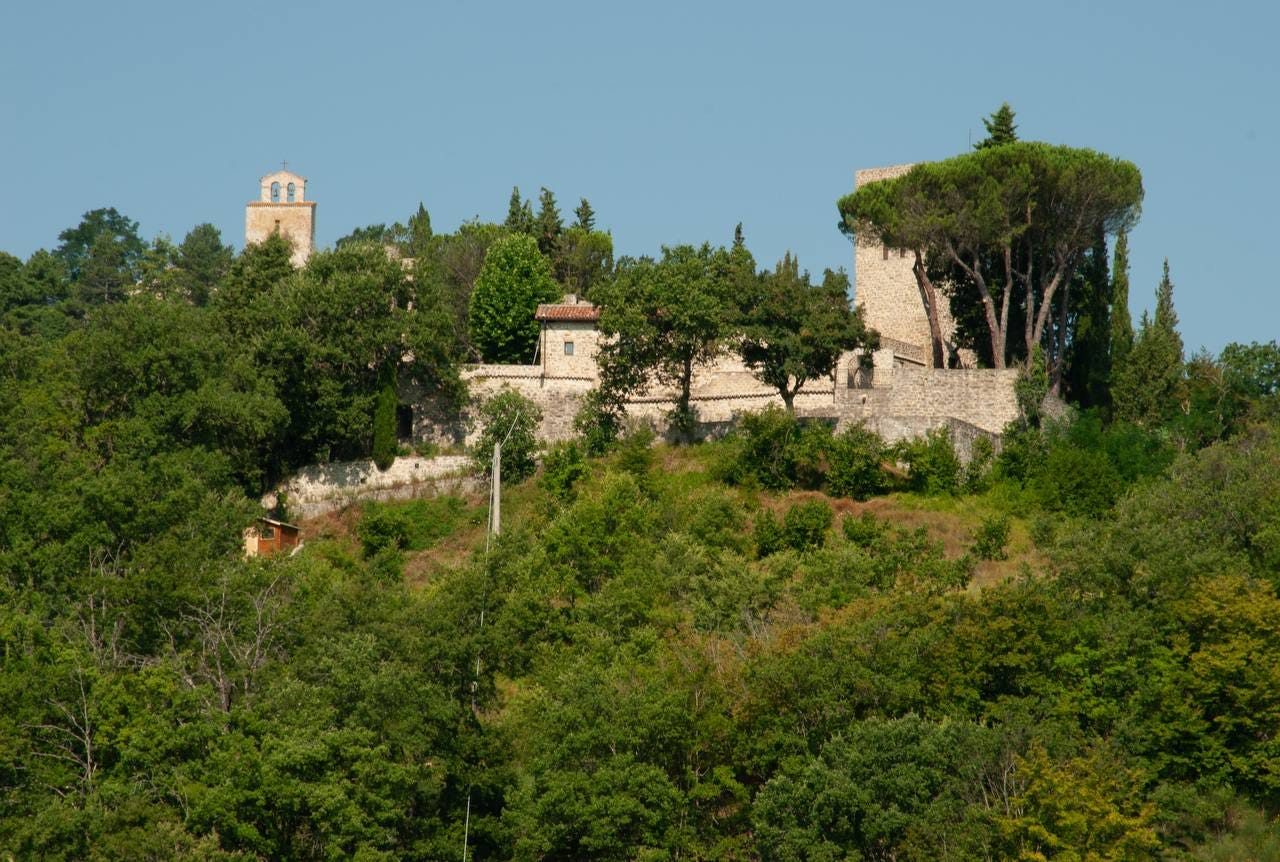
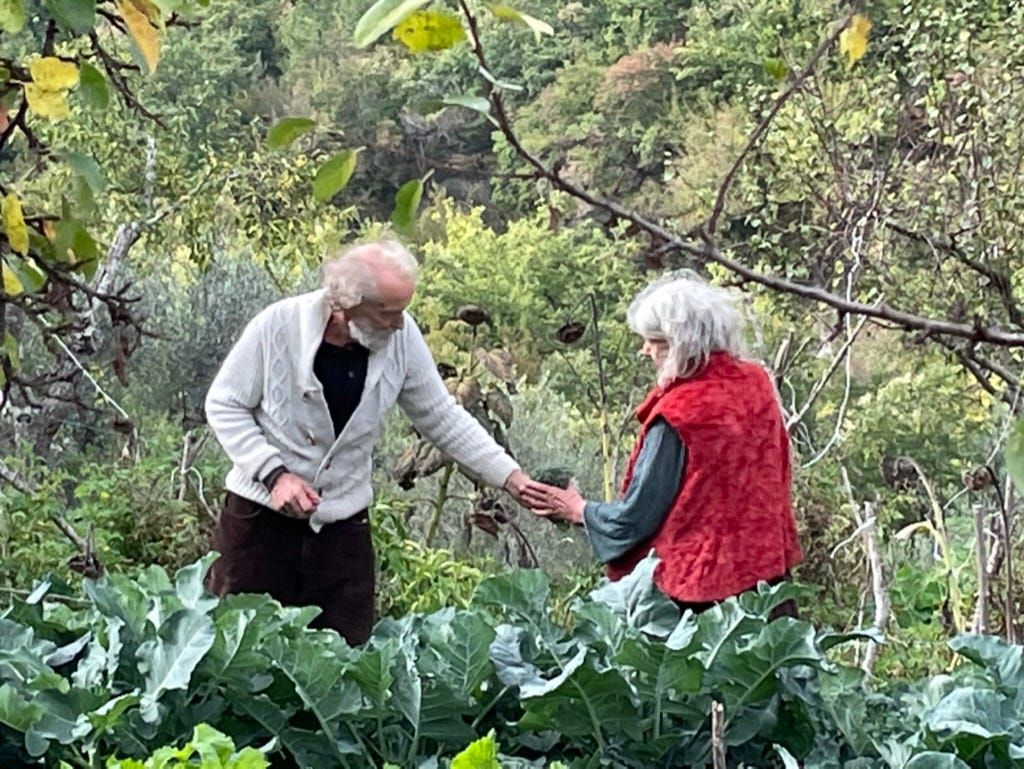
Sudden recognition ... Vallingegno! Good people!
What a wondrous story and account of this localised bit of land. To me, it all feels very real, vibrant, full of aliveness. It's got me wondering what stories lie in wait in the apparent 'wasteland' around where I live.